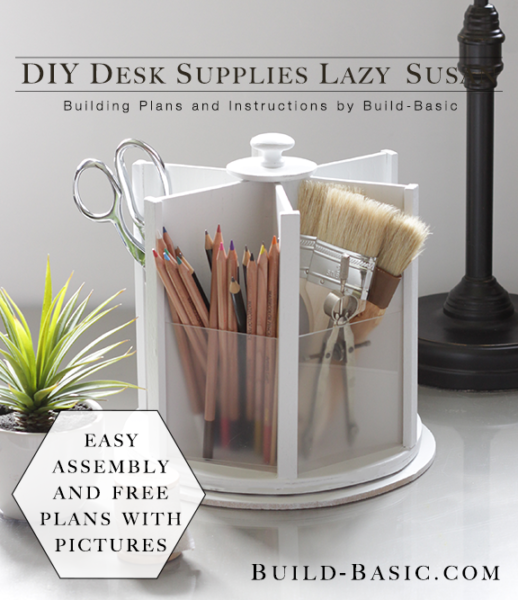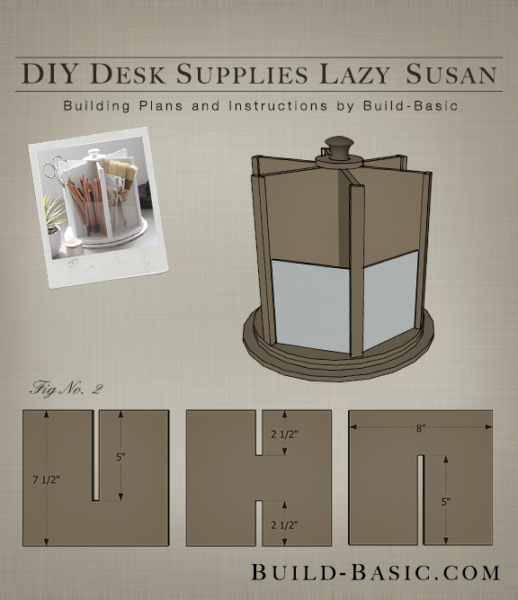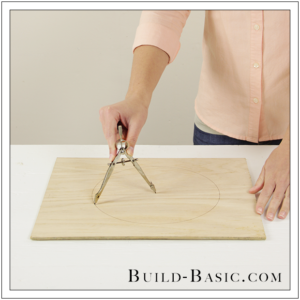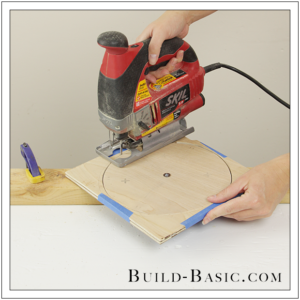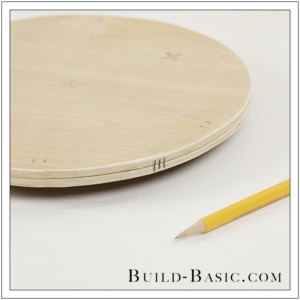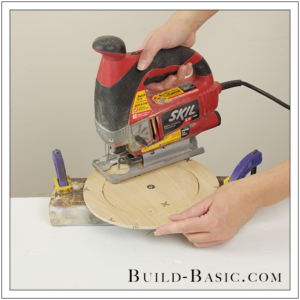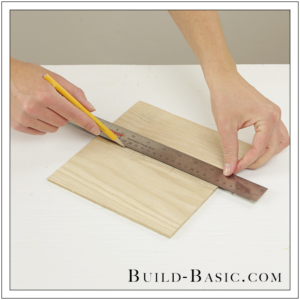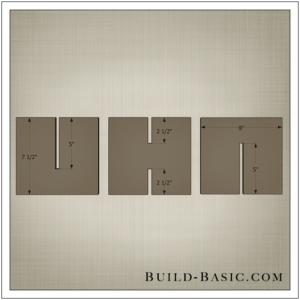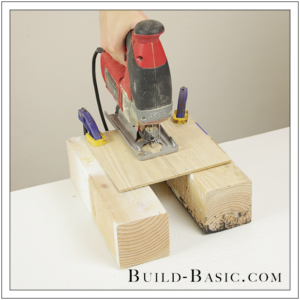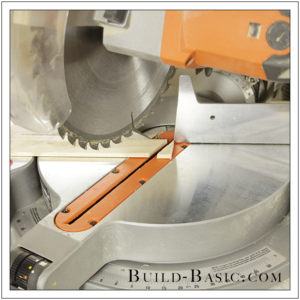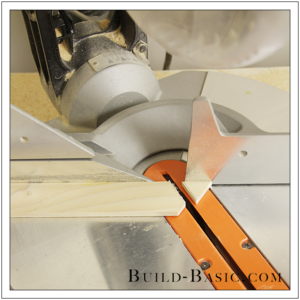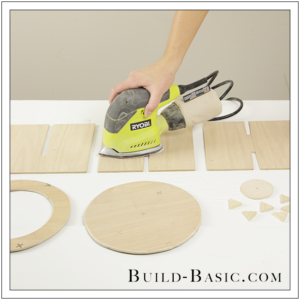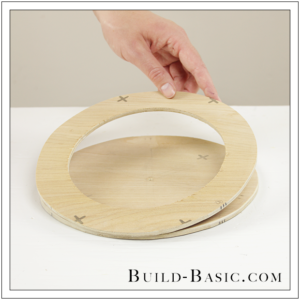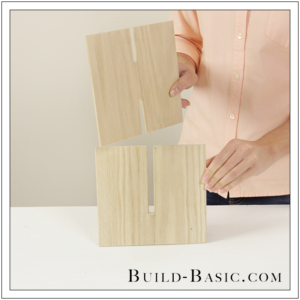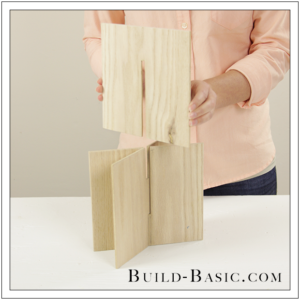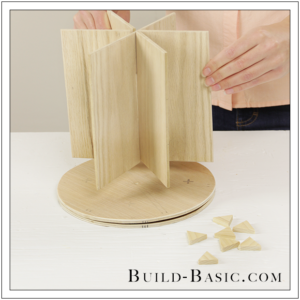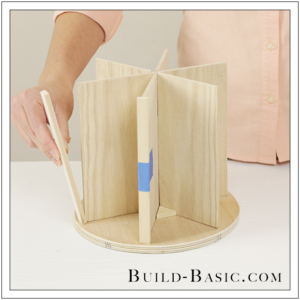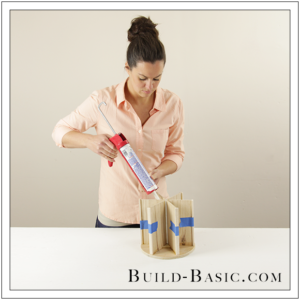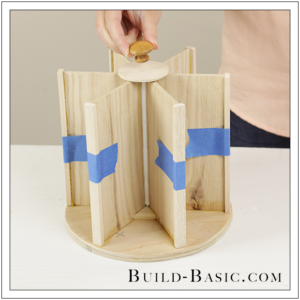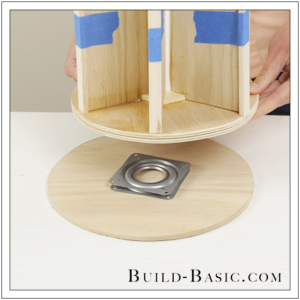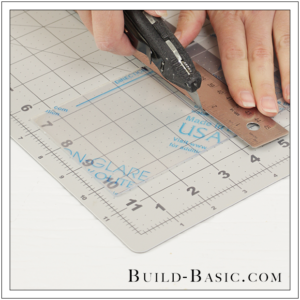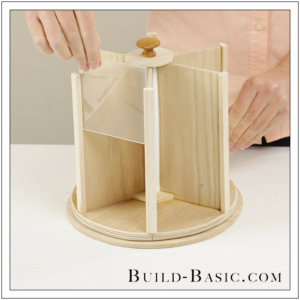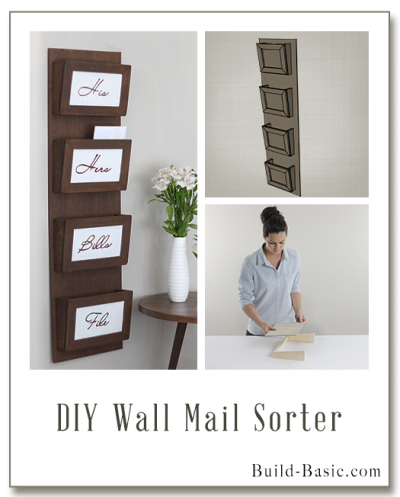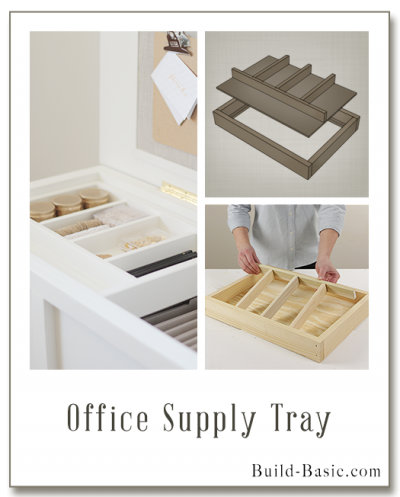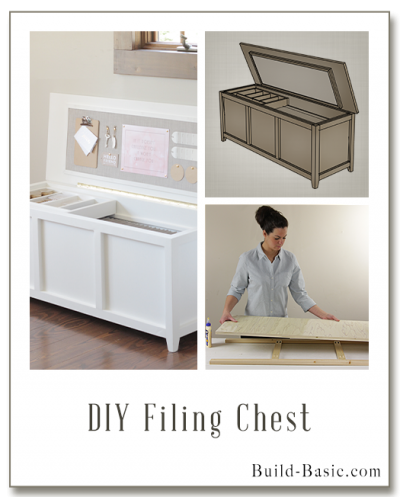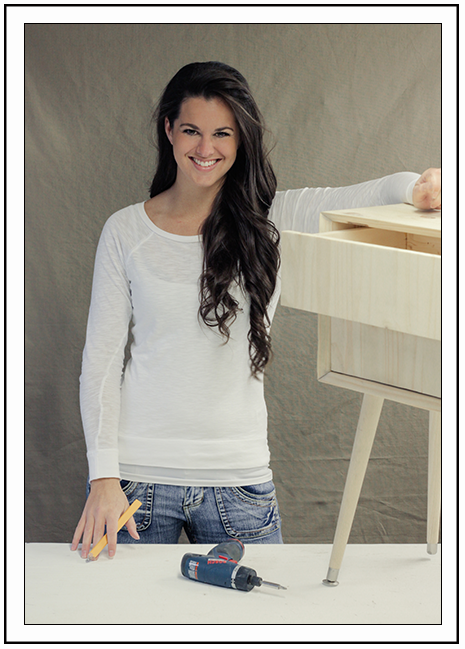Clear the clutter with this DIY Desk Supplies Lazy Susan. With a simple spinning base and compartments for supplies, organizing becomes a cinch. And while the Pottery Barn inspiration for this project retails at $49, my DIY version comes in under $20.
TIP: Click the image above to reveal the free building plans. Click the tabs below to see the tools, materials and cut list.
*This article contains affiliate links. All opinions expressed are my own. For more information on my safety and disclosure policy, click here.
Cost: $20
Time: 3 hours
Difficulty: Easy. Just cut the pieces with a jigsaw, and then assemble with glue.
¼” Plywood Wall – 3 @ 8″W x 7½”H
¼” Plywood Base – 2 @ 8½” Diameter
¼” Plywood Base – 1 @ 9″ Diameter
¼” Plywood Cap – 1 @ 2½” Diameter
¼” x ½” Trim – 6 @ 7½”
¼” x 1½” Glue Blocks – 6 @ Cut to 1″ triangles with 60-degree angles (See Step 8 and 9 for easy instructions)
Acrylic Panels – 6 @ 4″H x Cut to Fit
Steps
1. Mark the Circular Bases
The circular Base is made up of three-layered discs. Using a
drawing compass, outline a circle with a radius of 4¼ inches, and a second circle with a radius of 4 inches, and a third circle with a radius of 1¼ inches.

2. Cut the Bases
Using a
jigsaw cut out the circle with the 4¼-inch radius—this is the bottom layer of the Base. Set it aside. Cut the circle with a radius of 1¼-inches—this is the Cap. Now stack the outline of the circle with a 4-inch radius onto another square of plywood. Tape the two pieces of plywood together with painters tape. Cut the two pieces of plywood together to create the top two layers of the Base.

3. Mark the Discs
To ensure the top two layers of the base can be realigned, make registration marks along the edge of the discs. Set the top disc aside.

4. Prep the Middle Layer of the Base
On the middle layer of the Base, outline a smaller circle with a radius of 3 inches in the center of the disc. Using a
drill/driver, create a hole inside the circle for the jigsaw blade to enter. Starting from the hole, cut out the center circle using a jigsaw.

5. Cut and Mark the Slots on the Walls
Using the cut list above, cut the Walls to size. Using a
ruler, mark a 3/8-inch wide slot down the center of each Wall.

6. Mark the Depth of the Slots
Mark the top edge of each Wall. Using the drawing provided, mark the depth of the slots to be cut from each Wall.

7. Cut the Slots
Clamp a Wall off the edge of the work surface. (Tip: I have mine propped up on two 4 x 4 posts.) Using a
jigsaw, cut the slot from the Wall. Repeat this process to cut the slot(s) from each remaining Wall.

8. Cut the Glue Blocks – Part One
To create triangular blocks that will evenly space and position the Walls, you’ll need a
miter saw. Place a ¼” x 1½” board on the saw, and clip the end at 30 degrees, as shown.

9. Cut the Glue Blocks – Part Two
Twist the saw blade to the opposing 30-degree miter. Make a mark 1-inch from the point along each edge. Connect the marks with a line. Using the miter saw, cut along this line to create a perfect triangular Glue Block. Cut the end of the board straight (zero degrees) and then repeat the process to create five additional Glue Blocks.
 10. Sand the Parts
10. Sand the Parts
 11. Assemble the Base
11. Assemble the Base
Flip the top and middle layers of the Base upside down. Apply wood glue to the middle layer of the Base—the disc with the cut out center. Place the middle layer onto the top layer of the Base, using the registration marks to realign the edges. Allow the glue to dry.
 12. Dryfit two Walls
12. Dryfit two Walls
Slide the slots of two Walls together. Using the Glue Blocks as spacers position the Walls.

13. Add the Third Wall
Slide the slot of the remaining third Wall into place, using the Glue Blocks to position the Wall. If the Walls aren’t quite twisting into place, use the jigsaw to slightly open the width of the slots. Likewise, if the Walls aren’t dropping to place so that their top edges set flush, you may need to adjust the depth of the slots. Lastly, apply wood glue to the inside edge of each slot, and permanently assemble the Walls.

14. Add the Glue Blocks
Apply glue to the bottom edge of the Walls, and then set them in place, centered on the Base. Apply glue to the underside and two edges of each Glue Block, and them firmly insert them in place on the Base between the Walls.

15. Attach the Edge Molding
Using the cut list above, cut the ¼” x ½” Trim to length. Apply a bead of wood glue to the outside edge of each Wall. Place a piece of Trim along each edge, centered on the thickness of the Wall’s edge. Use a piece of painters tape to hold the Trim in place until the glue dries.

16. Caulk the Joints
To create a seamless look and fill and gaps in the joints, apply a thin bead of paintable adhesive caulk along the joints where the Walls meet.

17. Add the Cap and Knob
Apply wood glue to the top edge of each Wall, extending 1¼-inch from the center point. Center the circular Cap on the Walls, and then press it into place. Apply a dab of glue to the base of the Knob. Press the Knob onto the center of the Cap, and then allow the glue to fully dry.

18. Add the Lazy Susan Bearing
Center the
Lazy Susan Bearing on the layers of the Base, and mark its location. Apply glue rated for wood and metal like
THIS to the corners of the top and bottom of the hardware. Place the Lazy Susan Bearing onto the bottom layer of the Base, and then press the assembled top of the Base into place. Allow the glue to fully dry.
 19. Cut the Acrylic
19. Cut the Acrylic
Place the acrylic panel on a scrap board or cutting mat. Mark a centerline along the width of the 8-inch-wide panel. Using a metal straightedge and a box cutter, score the line several times. Place the acrylic over the edge of the board or work surface, and break it along the scored line. Now cut the 4-inch-tall panels to the width of the openings between the Walls, behind the Trim.

20. Insert the Acrylic Panels
With the factory edge facing upwards, place the acrylic behind the Trim at the top of the Wall. Slide the acrylic down the Walls behind the Trim until it rests level on the Base. Apply a bead of adhesive caulk or glue behind the Acrylic to hold the panels in place.

MORE BUILDING PLANS








 10. Sand the Parts
10. Sand the Parts 11. Assemble the Base
11. Assemble the Base 12. Dryfit two Walls
12. Dryfit two Walls





 19. Cut the Acrylic
19. Cut the Acrylic






